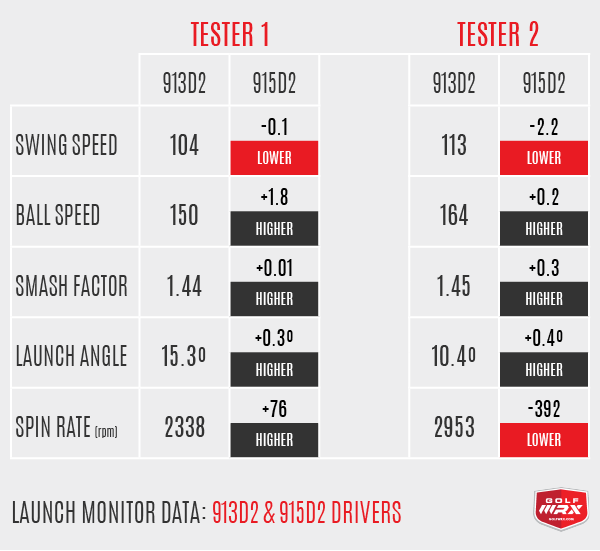Callaway Driver Adjustment

Oct 05, 2014 Simple explanation of Callaway's Optifit Hosel parts and instructions on how to use them to adjust loft and lie of Callaway Drivers and Fairway Woods.
From Golf Magazine ClubTest 2013 (March 2013) Callaway X Hot Driver Category: Price: $299 WE TESTED: 9.5째, 10.5째, 11.5째 with Project X Velocity graphite shaft PROS DISTANCE: It's lightweight (300 grams) yet powerful; it's long, too -- the longest driver of the week for several testers. ACCURACY/FORGIVENESS: Rewards smooth swings with straight shots; helps control fades and prevents them from becoming big slices.
FEEL: A real strength -- testers embrace the sweet sensation at impact; ball hugs the face briefly before exploding off as though it had been shot out of a cannon; plenty of zip and life to center contact. PLAYABILITY: Repeatable straight or slight draw pattern with penetrating trajectory -- shots with 46' shaft tend to hit then scamper along the ground; loft adjustability works wonders. LOOK: Matte gray crown with a black face is very businesslike in appearance; large, deep profile instills confidence at address. CONS Some testers find the club too light, making it difficult to locate the head throughout the swing and to time the swing; a few guys say the dull matte gray crown looks relatively unexciting. BOTTOM LINE: One of the highest-rated clubs in its class. Top marks for feel and playability.
Progressive draw bias through the lofts helps slicers keep more drives in play. HOT STIX'S TAKE Launch: Mid Spin: Low to mid Easy face-angle adjustment from open to square to closed. Max forgiveness on off-center hits. From Golf.com (December 2012).
The Most Frequently Asked Question If you read through the thousands of comments that have been posted on PluggedInGolf.com, you’ll notice a few themes – people thanking us for our informative reviews, people telling us our reviews are crap, and people asking for recommendations – but the most frequently asked question is, “How do I adjust my driver?” With that in mind, I thought I’d write a full length explanation of how adjustable drivers work and how you can get the most out of them. This Lesson Is For You If: You have an adjustable driver You aren’t sure how to adjust it Hosel Adjustments – Loft, Lie, and Face Angle Loft and Face Angle When TaylorMade launched the R9 family of drivers, they talked about hosel adjustments in terms of left and right, i.e. Marshall Valvestate Bi Chorus 200 Manual. Closing or opening the club face. Six years later, the conversation has changed to adjusting loft. Here’s what you need to understand: adjusting the loft means changing the face angle and vice versa.
Interheart Study Pdf. Here’s the simple version of the loft/face angle relationship: When you add loft, you are closing the face. When you remove loft, you are opening the face This is counterintuitive, but if you experiment with your own adjustable driver you’ll see that it’s correct.
Set the driver to the highest loft and you’ll see a closed face. Set it to the lowest loft and the face will be open. For those interested in the “why,” here it is: the driver you bought only has one loft.
If it’s a 10 degree driver, it will always be 10 degrees, no matter how you twist it. By twisting it (changing the face angle), however, you are taking what was a 10 degree driver with a square face and making it a 10 degree driver that is, for example, 2 degrees closed. Now, to get that face square at impact, you need to open that 10 degree driver a couple degrees, thus adding loft. Lie Angle The adjustment that most manufacturers have, but few talk about, is lie angle. Instead of calling it a lie angle adjustment, most manufacturers talk about fade, neutral, or draw settings. This is code for making the lie angle flatter, neutral, or more upright, respectively. PING Ping’s G30 adapter is fairly straightforward: there’s a circle which indicates that the club face is square and has the stated loft.
Then there are big and small plus and minus signs indicating that you can add or subtract 0.6° or 1.0° of loft. Remember, when you add loft, the face closes; when you subtract loft, the face opens.